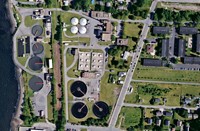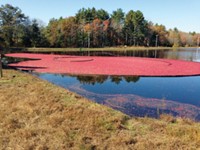Advertisement
Grab your lab coat. Let's get started
Welcome!
Welcome!
Create an account below to get 6 C&EN articles per month, receive newsletters and more - all free.
It seems this is your first time logging in online. Please enter the following information to continue.
As an ACS member you automatically get access to this site. All we need is few more details to create your reading experience.
Not you? Sign in with a different account.
Not you? Sign in with a different account.
ERROR 1
ERROR 1
ERROR 2
ERROR 2
ERROR 2
ERROR 2
ERROR 2
Password and Confirm password must match.
If you have an ACS member number, please enter it here so we can link this account to your membership. (optional)
ERROR 2
ACS values your privacy. By submitting your information, you are gaining access to C&EN and subscribing to our weekly newsletter. We use the information you provide to make your reading experience better, and we will never sell your data to third party members.
Environment
Lead In Crosshairs At Shooting Ranges
by Ivan Amato
September 25, 2006
| A version of this story appeared in
Volume 84, Issue 39
Every year, gun users in the more than 12,000 military and nonmilitary shooting ranges in the U.S. pump about 60,000 tons of mostly lead ammunition into the environs of the ranges. "Lead buildup in the ranges has become one of the largest fluxes of lead into the U.S. environment," according to environmental chemist Xinde Cao of the University of Florida, Gainesville, who described his efforts to trace and eradicate this lead in a presentation before the Division of Environmental Chemistry. The contamination is troubling, he noted, because the lead can migrate from the site when it leaches into surface or groundwaters.
To investigate what happens to lead ammunition in bullet-stopping berms and other soils at shooting ranges, Cao and his colleagues collected composite samples from five ranges whose soils have a diversity of chemical and physical properties. Using X-ray diffraction and scanning electron microscopy, the researchers found that the lead in bullets was transformed, depending on soil acidity, into the soluble minerals cerussite (PbCO3) or hydrocerussite [Pb3(CO3)2(OH)2]. In soils high in phosphorus, the lead transforms into a less soluble species: hydroxypyromorphite [Pb5(PO4)3(OH)]. Total lead concentrations at the test sites ranged from 2.5 g/kg of soil to nearly 36 g/kg, which places some shooting ranges among the most lead-contaminated sites in the U.S.
Cao pointed out that as much as 95% of the lead in shooting-range soils can be removed by gravity-based separations, such as shaking tables. To clean the soil enough to meet the Environmental Protection Agency's nonhazardous rating of no more than 5 mg of leachable lead per L of soil (measured with a protocol known as Toxicity Characteristic Leaching Procedure), the researchers turned to lead-immobilizing treatments with cement, quicklime, and phosphate. In tests, the first two worked in clay-rich soils, whereas the third treatment was effective in both sandy and clay-rich soils, Cao reported.
Choosing to clean shooting-range soils is almost entirely up to range operators, according to George C. Meyer, chief of EPA's Resource Conservation & Recovery Act Compliance Branch for several northeastern states. To help guide operators who choose to establish lead management practices, in 2001, EPA began publishing a document titled "Best Management Practices for Lead at Outdoor Shooting Ranges," now available online (www.epa.gov/region02/waste/leadshot). "We are getting more calls lately," Meyer told C&EN. Similar guidebooks for cleaning lead at shooting ranges are available from the Florida Department of Environmental Protection and the Interstate Technology & Regulatory Cooperation, a multi-stakeholder organization established in 1995 to speed deployment of environmental remediation techniques.




Join the conversation
Contact the reporter
Submit a Letter to the Editor for publication
Engage with us on Twitter